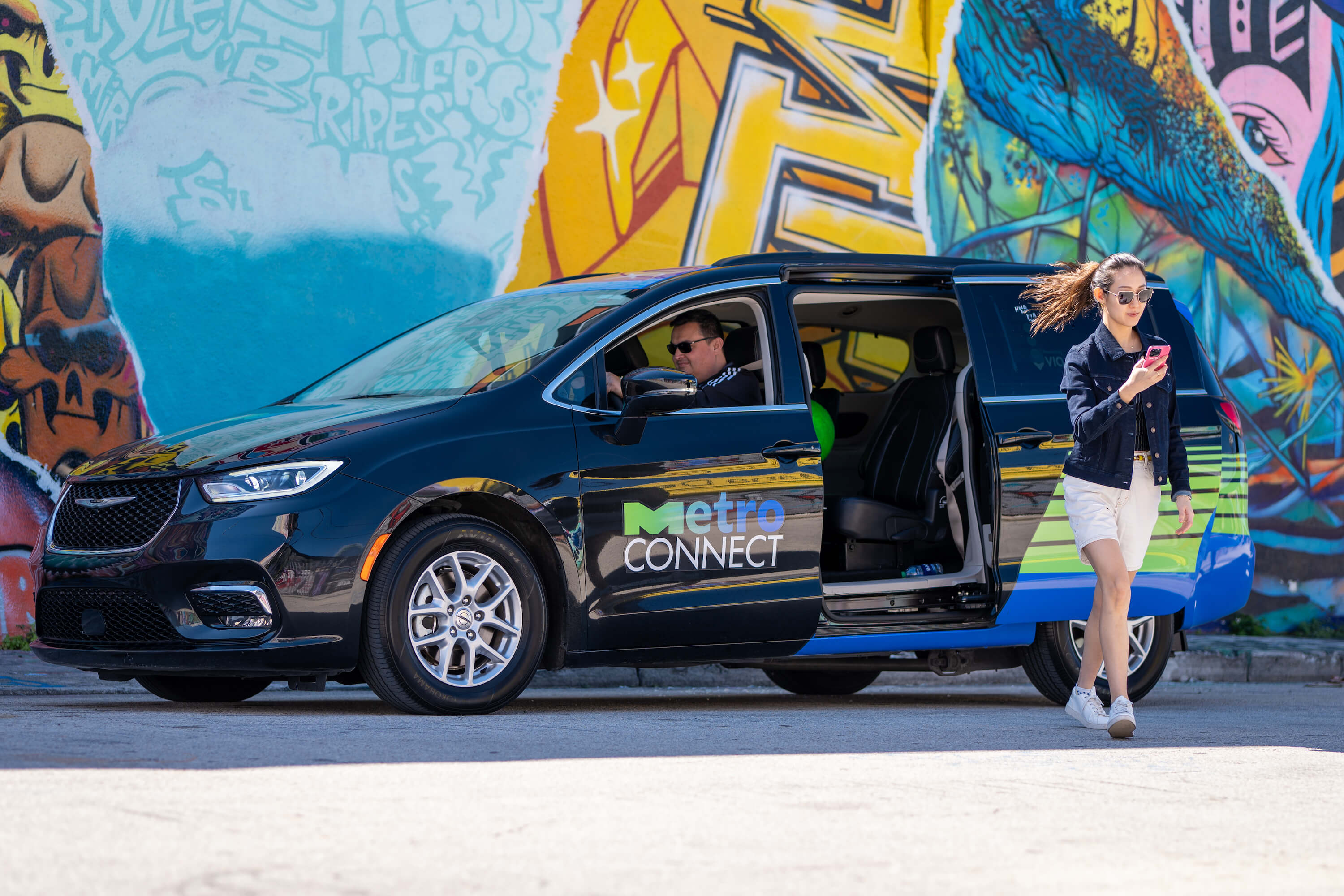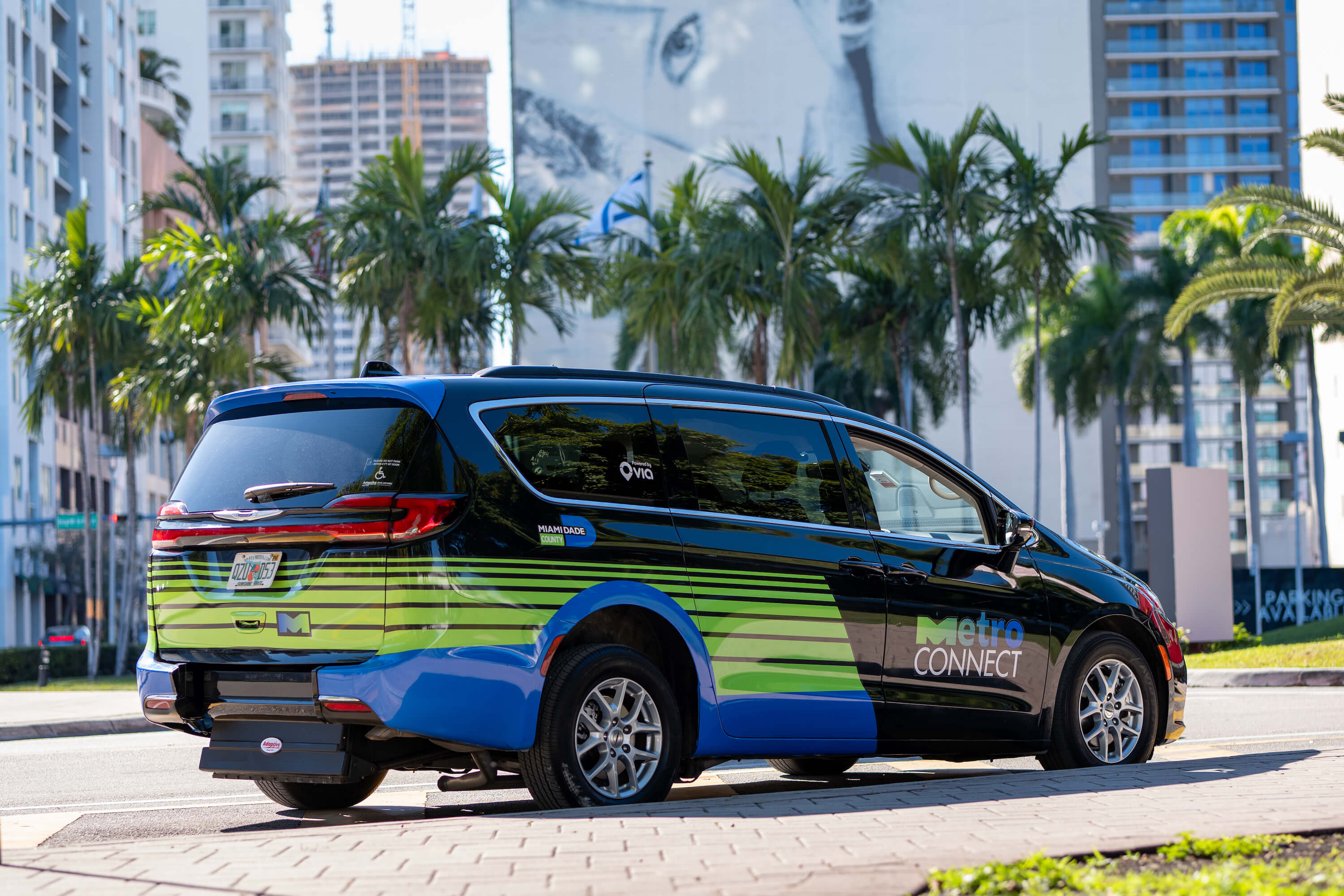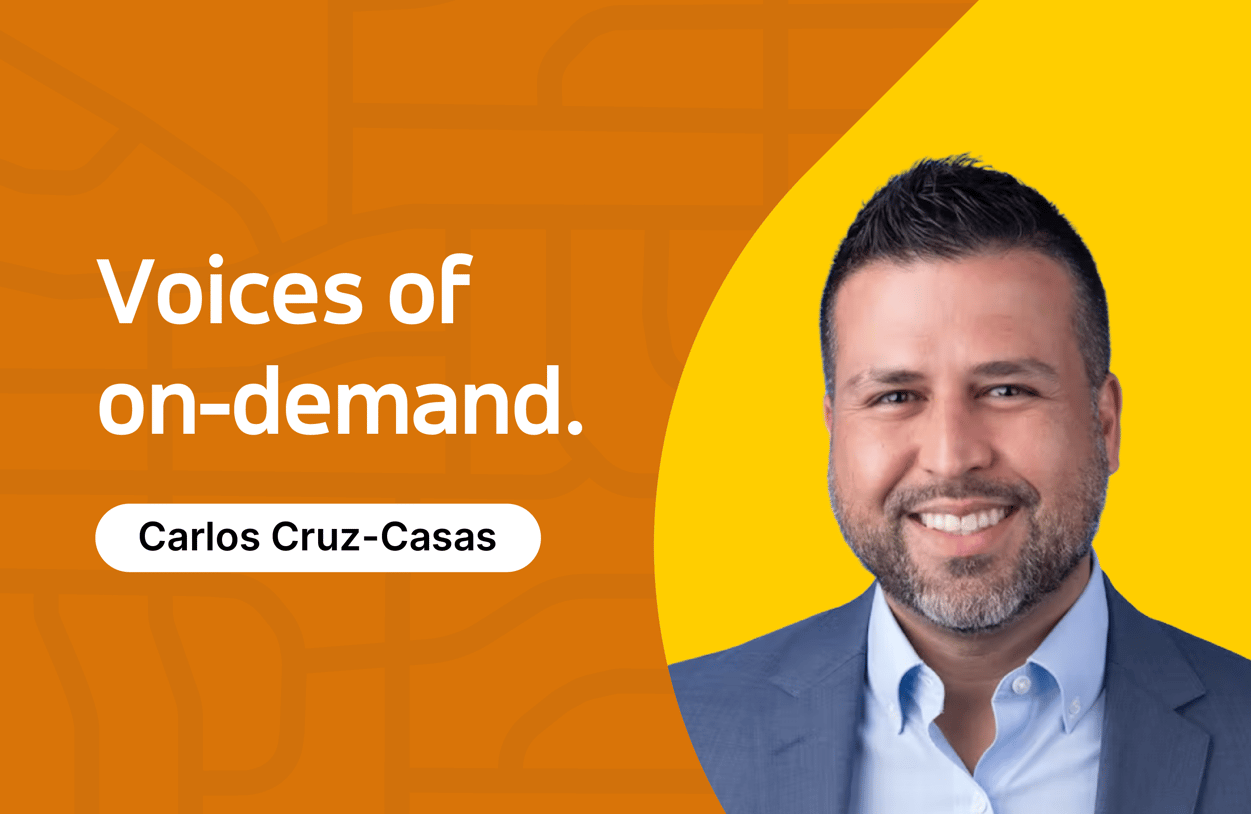Spotlight on: Carlos Cruz-Casas, Chief Innovation Officer at Miami-Dade County Department of Transportation and Public Works. He was formerly the Assistant Director of Transportation and Public Works, and has a graduate degree in urban transportation planning and engineering from the University of Florida.
At Miami-Dade County, Carlos Cruz-Casas’ primary focus has been to introduce mobility innovation and plan for a fully integrated transportation system. As a professional engineer dedicated to the development of Livable Transportation, Carlos seeks to achieve the right balance between mobility and livability. Now Chief Innovation Officer for the County, he continues to leverage technology to ensure that mobility advancement in Miami-Dade County moves faster than “government speed,” as he puts it.
Tell us a bit about your career path and how you navigate your professional progression as a city/transit leader over the years.
CC: I've always been interested in transportation. I had a series of great opportunities that led me to be what I am today, from undergrad school to a graduate degree at the University of Florida in urban transportation planning and engineering. After graduation, I joined a consulting firm and started doing all the different types of things in transportation, such as traffic engineering, traffic signal designs, bicycle design, et cetera.
While I was the assistant director of transit planning back in 2015, my job was to improve mobility in the county without a single dime — meaning you couldn’t just build a rail line, subways, or bridges. Buses were the most flexible transit mode we had, but they were still very rigid. I thought there must be a better way. At that time, private ride-sharing services appeared. I thought, instead of fighting them, why don't we learn from them? We know that people in the community value their time. People are willing to pay a little bit more to have a shorter and more comfortable ride, and they value the flexibility to go where they need to go when they need to go.
That’s why we introduced Go Connect (now rebranded as MetroConnect), an on-demand microtransit service, to our mobility ecosystem. It has become a game changer for us because it significantly increases the reach of public transit. Instead of having a four-mile fixed route with 20 bus stops, now we have a dynamic route with a hundred stops, which covers more people and helps connect them to opportunities. Public transit should be redefined — beyond just bus and rail it should include everything else that connects people to opportunities, such as on-demand transit, carpool, vanpool, bikes and scooters.

How many people on your team within the City work full-time on the transit network? What’s your involvement in the operation of GO Connect?
CC: There are 20-25 people in the planning and scheduling for the full transit system. But after GO Connect was launched as an innovation-focused project, we spun off an Office of Innovation and Mobility Services where I’m Chief Innovation Officer. Our innovation team also manages micromobility, vanpool, regulatory arm for FHV, paratransit, transit card, et cetera. My priorities are looking at how we establish innovative programs as part of the mobility ecosystem and making sure we leverage all options, like technologies and operation solutions, to provide access.
What made you opt for a turnkey microtransit solution, with both technology and operations provided by a single vendor?
CC: We wanted to introduce a new solution without creating a distraction to the other components of our transit system. So I think the best way to do that is a full turnkey solution — from software for trip planning, to vehicles and drivers, to the software platform that integrated all those components. The turnkey solution helps us quickly scale up and down, deploy the service fast, and allows us to modify the service in response to data. It’s a lot simpler to go with one company compared with collaborating with multiple partners.

What challenges did you run into as you brought this service to life? How did you overcome them?
CC: One of the things that held us back is funding, because there’s not so much discretionary funding for trying new things. So we sought out funding from different kinds of pots in order to launch this. Government-funded services need “seed money” to start up and get running, and then you can show the results and benefits to secure additional funding — just as venture capital does for startups. After this process, it can become a normal line item in our budget.
Another challenge is to prove to our internal transit teams that microtransit is supporting rather than competing with fixed-route transit. And I think what made it a little easier was working with the Via team, who helped us better describe what microtransit is and what tools we were implementing to make sure that it won’t be in competition with transit. For example, the multimodal trip planning feature available in the app prioritizes access to conventional transit first over microtransit trips in the assignment logic.
How do you approach designing and building equitable transit?
CC: When we talk about transit, we always talk about ridership, travel times — but we don't often talk about the reach of each service. We’ve been using Remix to tell us things like how many people actually live within a quarter mile of fixed-route service, and it shows that your reach is fairly limited there. Ultimately in an area where you have microtransit, you have more flexibility for the vehicle to move around — instead of having the user walk to the bus stop, the bus stop is moving to the user — and you can get a broader reach than just with fixed-route alone.
What’s your next big goal for GO Connect?
CC: We plan to mainstream the on-demand service, creating a path for moving this standalone program toward a more typical transit solution, and embedding it in day-to-day transit operations. We’ll consider expanding its use cases, such as merging it into a paratransit service, dealing with payment integration, and additional trip planning integrations. My dream is to approach mobility as one, integrated space: traffic, bicycles, transit, services, and every transit element cohesive as a single system. Rather than caring about the mode, a specific detail or the space, we should care about the outcomes of the service. And this on-demand solution is part of the vision.
What advice would you give to other city leaders seeking to re-invent transportation in their city?
CC: Most important is identifying your goals. Before implementing microtransit, you should understand your community’s needs. And then once you identify a solution, just be a little more flexible and understand that things might change. Also, remember to be creative with funding. Our initial funding for the microtransit program was the congestion mitigation air quality grant (CMAQ).
We all talk about mode shift and behavior shift, but what really drives people to change their travel behavior?
CC: There’s one metric we don’t usually measure that really matters for this: total travel time. If I’m driving to my destination, I might have to go up and down in a big parking deck and that adds 10-15 minutes each time. Taking the bus can also add time – riders wait at the bus stop. However, microtransit works differently: people can request a ride by their phone, and then wait in the comfort of their home.
When designing transit service, the goal is not only about ridership, it’s about comfort, safety, travel time, and cost.
We’ve seen lots of positive impacts that the service has brought to the community. But in terms of your own career, how do you think GO Connect has impacted your career development?
CC: This service has helped me build my career because I understood from the start that there is a need to change the definition of public transit — and this service helps make a new definition concrete. On-demand transit helps us open our minds about what we're here to do by transit ultimately. It doesn’t mean just keeping the wheels of the bus moving. It’s more about delivering opportunities for our riders and connecting them to where they need to go. Implementing GO Connect has helped me lead the conversation away from modes and towards outcomes.

Data Journalist




%206.png?width=71&height=47&name=The%20Buzz%20Blog%20Hero%20(1750%20x%201200%20px)%206.png)